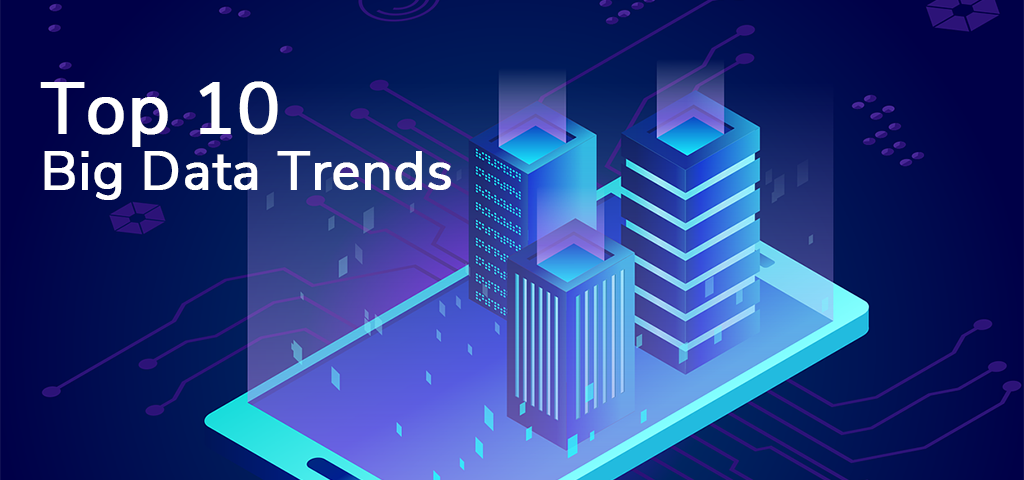In business, the only constant is "change." To refuse to change is to choose to stagnate. With businesses constantly innovating as they look for new ways to gain customers, no savvy entrepreneur can afford to ignore the trends in the market. With the advancements in technology that have taken place over the past ten years, big data must now be a key part of any business strategy. These data allow entrepreneurs to optimize every single aspect of their businesses when used properly. Without further ado, here are the top 10 big data trends for 2022.
Top 10 Big Data Trends for Business in 2022
1. Real-time analytics
Anyone with even a cursory understanding of what big data has already understood how it allows businesses to analyze and interpret the past behaviors of customers so the business can adjust accordingly. However, a novel aspect of the big data analytics trends 2022 is a real-time analysis where companies analyze customer behavior in real-time and use this data to make predictions about the future. What this means is, rather than responding swiftly to market trends as they arise, companies can now predict these trends and actually be the first to start them.
2. Geospatial data analysis
One of the big data trends that is sure to explode in popularity among entrepreneurs in 2022 is the use of geospatial analysis. One common misconception is that big data's usefulness is limited to the analysis of customer behavior. Far from it, it can also be used to analyze one's own business layout and supply chain. Big data can help you optimize the location of your office(s), warehouses, employees, etc. It can also help you understand where your suppliers and customers are and how best to get to them.
3. Cloud data analysis
Another of the most important big data trends is data analysis via cloud storage. Companies already know that cloud storage can be used to store and distribute data more efficiently. What many don't know, however, is that cloud storage also lends itself to several improvements in terms of the efficiency of data analysis. Cloud storage means larger databases and more data which are simultaneously centralized and dispersed. Ultimately, this means data analysis processes using cloud storage will be more efficient than ever before.
4. Augmented analytics
With the vast stores of data that cloud storage has now made available to companies, it's no longer sufficient to have complex machines analyze this data while being under the control of humans. No, the integration of artificial intelligence into the big data analysis process is now of the utmost importance. In addition, machine learning processes allow companies to build artificially intelligent entities specialized to perform their unique data analysis needs.
5. Data scientists
Through direct control of data analysis processes is quickly becoming irrelevant, those who used to perform this role are not. To make artificial intelligence and machine learning a core of your business model, you will still need data scientists to design and monitor these systems for the time being. Thus, in 2022, the demand for data analysis experts, such as chief data officers, is expected to skyrocket to astronomical levels. It's best to act fast to acquire them while the going is good.
6. Metadata
With the current rate of advancements in big data analytic processes, there is one subfield that simply cannot be left behind: metadata. Metadata is data that describes other data. For example, let's say you happen to run a shoe company that offers online customer support, and the first thing most customers do is ask if you have a shoe in their size or a particular color. Metadata will help you classify that data as "x% of customers ask about size", "y% ask about color". It is instrumental in simplifying mountains of complex data for further analysis.
7. Big data in physical spaces
Too often, entrepreneurs limit their application of big data to online resources not directly involved with the running of the physical business. Well, that ended in 2020. More and more, companies are integrating the collection, analysis, and utilization of big data into their physical locations. What this means is companies can now optimize in-person customer experiences in ways only previously possible with online sales.
8. Natural language processing
One of the most impressive big data trends in 2022 will be the massive advancements that will be made in natural language processing. Technological advancements have allowed companies to go beyond machine guided analysis and instead enter the realm of human-like analysis. What this means is when data is submitted to big data systems, rather than first having to convert data to a form understandable by machines, the data can be analyzed directly. What's more, these machines will be able to respond to humans directly using human speech. In practical terms, if a man types "where can I find this shoe", the machine will respond like a human would without the need for any translations.
With all the reasons listed above, it's easy to see why companies and businesses of all sizes would want to get their hands on data stores. That is why data marketing, the marketing of data, is set to become as popular as ever in 2022. Marketplaces that specialize in selling specific types of data in packaged forms will soon be the rage.
10. Full immersion
Big data promises to do something that has never been done before, in the coming months: provide full customer immersion. With the degree of optimization and efficiency big data analytics trends 2022 is providing, companies will be able to fully immerse their customers in an environment seemingly completely separate from the outside world.
Conclusion
In conclusion, the top 10 big data trends for 2022 promise to completely change the way in which companies operate. With big data, companies will be able to optimize their operations to 100% efficiency. However, the businesses which will benefit the most from this are those who act before everyone else. So what are you waiting for? Go make some money using these big data trends.




